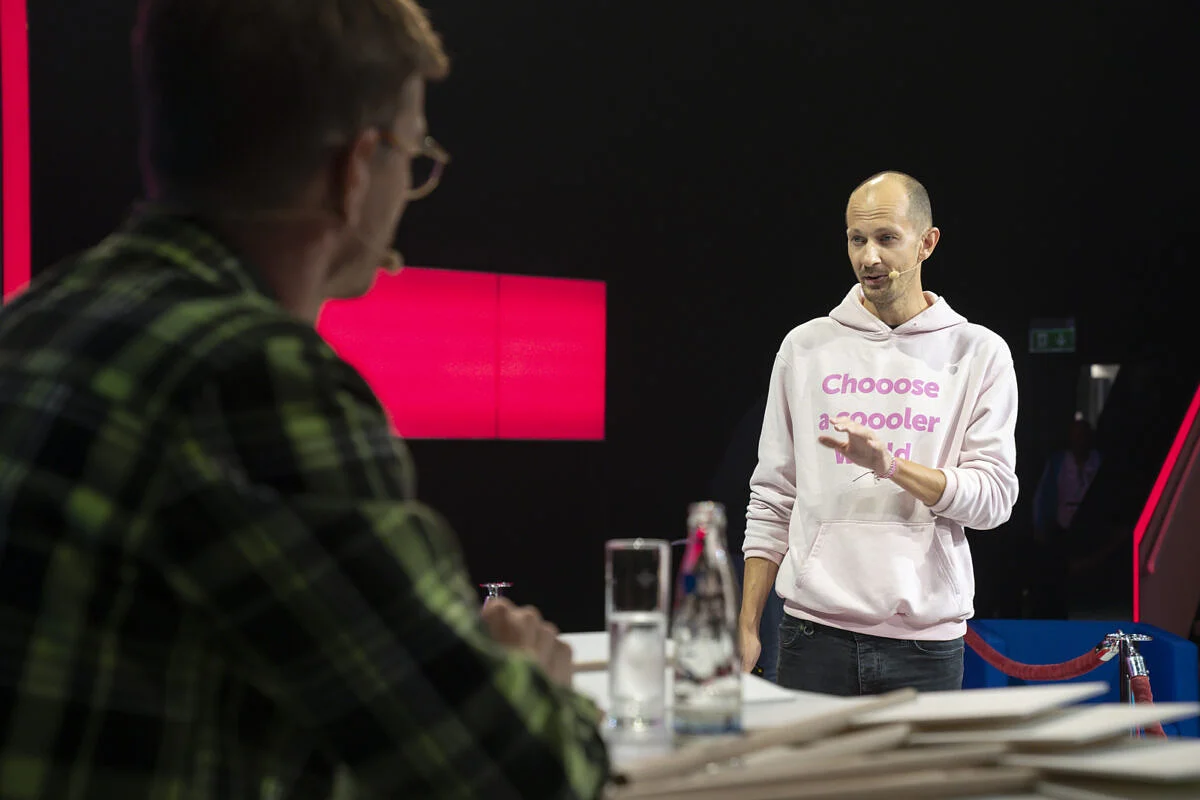Sustainable start-ups: Can climate protection and business work in combination?
Green, greener, start-up. More and more companies are focusing on sustainability. But how can this demand be met without foregoing the demands of a prospering business? In this interview, CHOOOSE founder Andreas Slettvoll indicates how this can work.

At the latest since Greta Thunberg’s “Skolstrejk för Klimatet” and the “Fridays for Future” protests, the fight against climate change has arrived right in the middle of society. And thus sustainability is also playing an increasingly important role for companies. There are several reasons for this. On the one hand, social pressure to make a contribution to climate protection is increasing. On the other hand, it makes economic sense in the long term to invest in renewable energies. However, large companies, in particular, are finding it hard to make the transition, because changes always entail risks that are difficult to calculate. Start-ups have it easier in this regard. For them, there are no existing patterns that have to be broken. Their business models can be adapted to current standards from the ground up. And these can also include sustainability principles.
Innovative sustainability meets entrepreneurial spirit
Thus an entirely new sector has arisen: Cleantech. With innovative ideas and using the right state-of-the-art technology, these companies are making their contribution to slowing climate change, reducing CO2 emissions, cleaning up oceans and preserving biodiversity. A prominent example of this is the “The Ocean Cleanup” project by 25-year-old Dutchman, Boyan Slat. DMEXCO also launched a sustainability project for the first time this year. DMEXCO Forest is intended to offset part of the CO2 emissions caused by international visitors and exhibitors traveling to Cologne.
Making a contribution to slowing climate change. This is also the motivation behind the Norwegian start-up “CHOOOSE“. At the SevenVentures Pitch day at DMEXCO 2019, the company entered the final round with its idea. The founder of CHOOOSE, Andreas Slettvoll, answered a few of our questions:
Andreas, how would you describe CHOOOSE to someone who has never heard of it?
CHOOOSE offers a kind of subscription for climate protection. Companies and private customers are given the opportunity to make a regular contribution to CO2 reduction through financial participation. For individuals, this works similarly to a Netflix subscription. You select a tariff and a monthly fee is deducted. We offer companies various options: either the provision of employee benefits or – for digitally oriented companies – through a plug-in, so that they and their customers can seamlessly determine their carbon footprint.
Why should consumers select CHOOOSE?
We can all do our part to limit our CO2 footprint. But no matter what you do, you will still have a significant and inevitable footprint. With CHOOOSE you take responsibility for this by financing CO2 reductions in other parts of the world.
And what about companies?
Companies that do not take action today will no longer be relevant to consumers or workers in a few years’ time. We work with listed banks, a variety of fashion brands, major e-commerce providers in Europe, Asia and the USA such as food delivery services, tour operators and food platforms. They have all integrated our seamless plugin that allows their customers to determine the CO2 footprint of any product anywhere in the world. This plugin is free for companies, so why shouldn’t they motivate their customers to take action?
What types of projects does CHOOOSE support?
So far, we have supported 25-30 green projects in developing countries. The majority of these are UN-verified projects of the highest standard that can demonstrate an additional CO2 reduction effect. These are often producers of clean energy from developing countries, who need financial support from us. They all also have local benefits such as job creation, access to clean water, better infrastructure and access to clean energy in underserved communities.
In addition, we are currently testing various options for atmospheric carbon degradation and ocean-related carbon storage as part of other pilot projects.
What criteria must companies meet in order to receive CHOOOSE support?
In addition to the criteria that companies must meet for UN certification, we have very strict criteria for the type of verification that projects must demonstrate. After all, the last thing we want is to support a project that neither needs nor deserves the support of the CHOOOSE community. For this reason, we have brought together some of the world’s leading scientists and practitioners in an independent Carbon Advisory Board to ensure that we always support the best possible projects with proven impact.
What possibilities are there for me as a subscriber to select the projects I would like to support with my contribution?
Transparency is our top priority and, as such, all details of the projects are published. Unfortunately, this type of approach is not very widespread in the carbon world. We want to change this to ensure new functions enter the market that allow a high degree of personal flexibility. Everyone should have access to a clearly defined portfolio of great projects with full transparency about the underlying prices, impacts and documentation.
What are your goals for the future?
CHOOOSE will be a driving force in enabling everyone to participate in global CO2 reduction. We currently serve brands and individuals in 70 countries – around 40,000 people in total – and our goal for 2020 is simple: to reduce CO2 emissions by at least 1 million tons.
The bottom line
Start-ups like CHOOOSE or The Ocean Cleanup are impressively demonstrating the opportunities that arise when entrepreneurial spirit meets the motivation to create something sustainable. Innovations such as CO2 capture technologies and social change – towards environmentally friendly and sustainable products and services – also provide companies with the prerequisites for structural adjustment. A step-by-step transition will thus also enable established companies to keep up with the pace of start-ups.

Exciting insights on the topic of sustainability in business are also provided in the DMEXCO 19 Panel “We Care! How business and sustainability work together”. Mark Haviland (EVP Brand Development & Sustainability EMEA Rakuten), Bart Manuel (Co-Founder Dept) and Hannah Wickes (Chief Marketing Officer Ecosia) discuss the possibilities of a sustainable corporate structure and culture.





